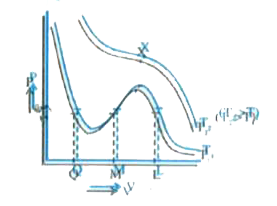A solute 'X' is trimerised in a solvent. The experimental molar mass is than that of calculated mass.Solution in Telugu
Higher association leads to decrease in colligative property. Molar mass is inversely proportional. Therefore experimental molar mass is higher than calculated mass.
Topper's Solved these Questions
- SOLUTIONS BOOK - AAKASH SERIESCHAPTER - SOLUTIONS EXERCISE - Subjective Exercise-1
16 Videos
- SOLUTIONS BOOK - AAKASH SERIESCHAPTER - SOLUTIONS EXERCISE - Subjective Exercise-2 (Long Answer)
4 Videos
- SOLIDS STATEBOOK - AAKASH SERIESCHAPTER - SOLIDS STATEEXERCISE - PRACTICE EXERCISE
63 Videos
- STATES OF MATTER BOOK - AAKASH SERIESCHAPTER - STATES OF MATTER EXERCISE - ADDITIONAL PRACTICE EXERCISE -PRACTICE SHEET (ADVANCED) (LINKED COMPREHENSION TYPE QUESTIONS) (PASSAGE- IV)
2 Videos
Similar Questions
Write the different types of solutions with suitable examples
View SolutionWhat do you mean by vapour pressure of a liquid ? Describe the vapourization and condensation processes in a closed vessel. How does the vapour pressure change with temperature ?
View SolutionWhich of the following is considered as true amorphous solid
View SolutionAt a particular temperature and pressure for a real gas Van der Waal's equation can be written as:
(P+aV2m)(Vm−b)=RT

where Vm is molar volume of gas. This is cubic equation in the variable Vm and therefore for any single value of P & T there should be 3 values of Vm. Which are shown in graph as Q, M and L.
As temperature is made to increase at a certain higher temperature the three values of Vm becomes identical. The temperature, pressure & molar volume at point X are called Tc, Pc & Vc for real gas. The compressibility factor in terms of Pc, Vc and T is called Zc.
The expression of Van dcr Waal's constant 'a' can be given as
View SolutionAssertion:Molecular mass of KCl calculated on the basis of colligative properties will be lower than the normal molecular mass. Reason : Experimentally determined molar mass of always lower than the true value .
View SolutionCalculate the mass of urea (NH2CONH2) required in making 2.5 kg of 0.25 molar aqueous solution.
We know that molarity (m) =Moles of soluteMass of solvent in kg
and moles of soute =Mass of soluteMolar mass of solute
So, find the molar mass of solute by adding atomic masses of different element present in it and mass by using the formula,
Molality =Mass of solute/molar mass of soluteMass of solvent in kg
View SolutionCalculate a) molality b) molarity and c) mole fraction of KI if the density of 20% (mass / mass) aqueous KI is 1.202" g mL"^(-1) . As density and % by mass is given, so find the mass of solute and solvent (as x % solution contains x g solute in (100 - x) g solvent). Find volume of the solution, by using,, Volume =("Mass")/("Density") Recall the formulae of molality, molarity and mole fraction, to calculate them. Molality =("Mass of solute/ molar mass of solute")/("Mass of solventin kg")
View SolutionIf the mole fraction of solute is 0.5 and molar mass of solvent is 50 than molality of solution will be
View SolutionIf a solute associates in a solvent, its experimentally calculated molar mass using boiling point elevation method will be
View SolutionIf a solute associates in a solvent, its experimetally calculated molar mass using boiling point elevation method will be
View SolutionA: For a given solution (density 1gm/ml), molality is greater than molarity.
R: Molarity involves volume of solution while molality involves mass of solvent.
View SolutionIf observed molar mass of a solute is more than calculated molar mass, then the solute undergoes .............. in the solvent.
View Solutionअभिकथनः अणुसंख्यक गुणधर्मों के आधार पर KCI का गणना किया गया आण्विक द्रव्यमान सामान्य आण्विक द्रव्यमान से कम होता है।
तर्कः प्रायोगिक रूप से निर्धारित किया गया मोलर द्रव्यमान हमेशा ही वास्तविक मान से कम होता है।
View SolutionAssertion:Molecular mass of KCl calculated on the basis of colligative properties will be lower than the normal molecular mass. Reason : Experimentally determined molar mass of always lower than the true value .
View SolutionWhich of the following relations is correct for the mole fraction of the solute (x)? (m and M are the molality of the solution and molar mass of the solvent respectively.)
View Solution
